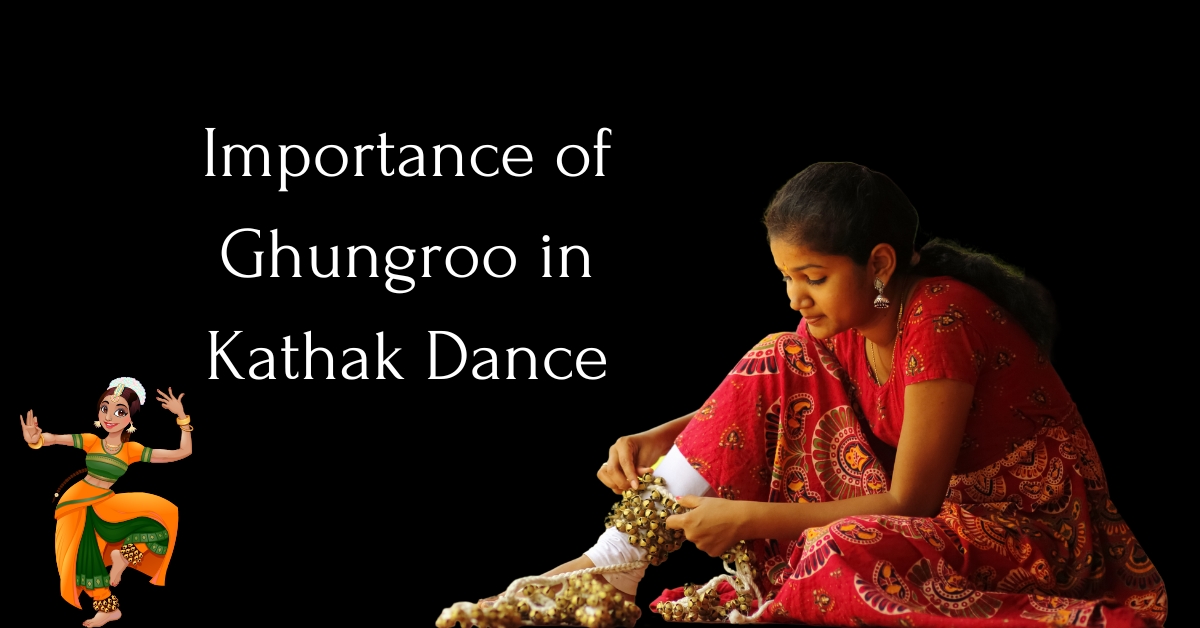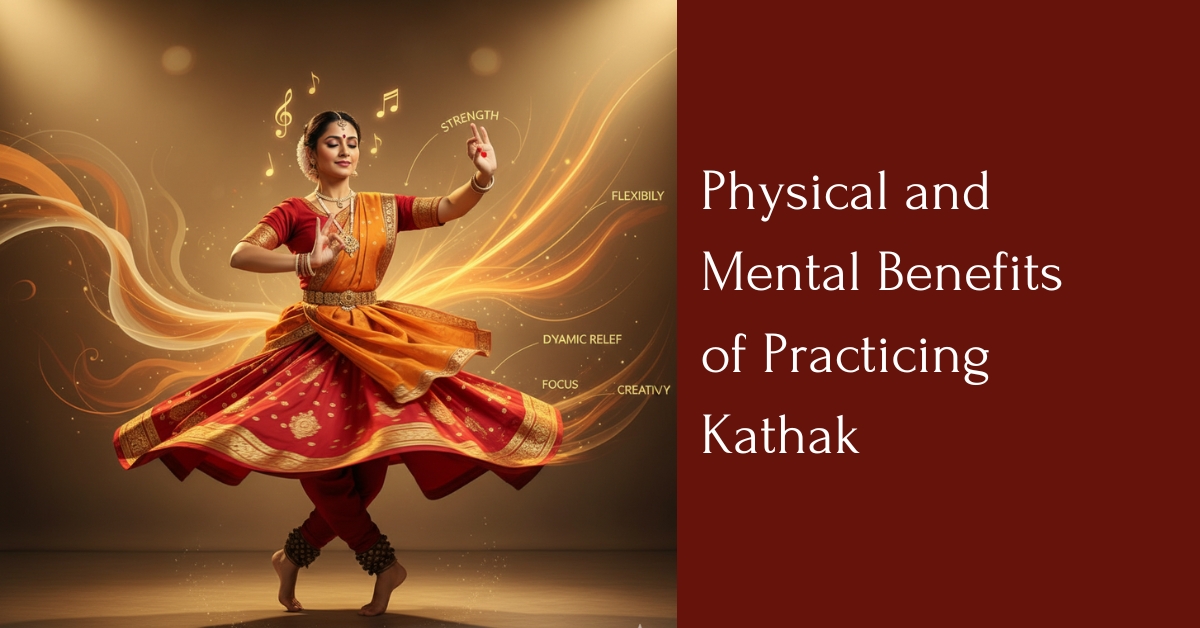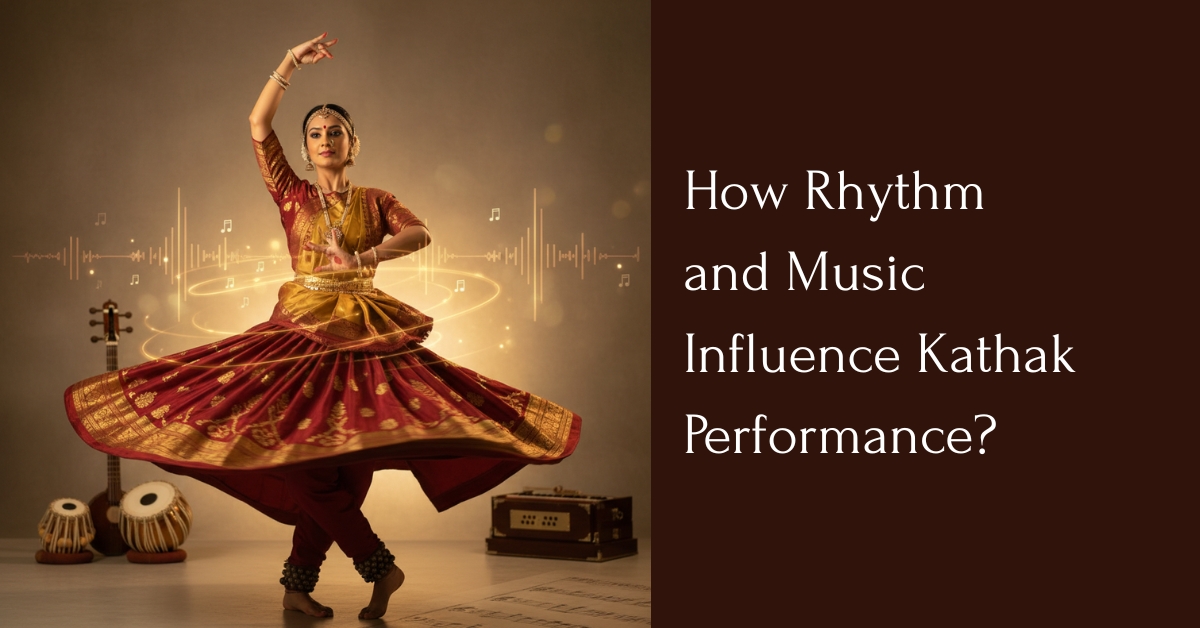Importance of Ghungroo in Kathak Dance

Kathak, one of the eight classical dance forms of India, is an expressive and rhythmic art form that beautifully intertwines storytelling, footwork, and grace. Among the various elements that contribute to its charm and authenticity, Ghungroo (ankle bells) holds a place of paramount importance. These tiny metallic bells strung together and worn around a dancer’s ankles are more than just ornaments; they are an extension of the dancer’s soul, enhancing the rhythmic precision and expressiveness of the performance.
This blog delves into the significance of Ghungroo in Kathak, exploring its historical roots, its role in enhancing rhythm and movement, its spiritual symbolism, and how it aids in the learning process of the dance.
The Historical and Cultural Significance of Ghungroo
The use of Ghungroo in Indian classical dance dates back centuries, with its roots in temple traditions and devotional performances. Initially, dance was performed as a form of worship, and the rhythmic sound of Ghungroo was believed to invoke divine energies. Over time, as Kathak evolved from temple dances to court performances during the Mughal era, Ghungroo became an essential tool for showcasing intricate footwork and rhythmic patterns.
The tradition of wearing Ghungroo is not limited to Kathak; it is also prevalent in other Indian classical dance forms like Bharatanatyam, Odissi, and Kuchipudi. However, in Kathak, where tatkar (footwork) plays a dominant role, Ghungroo assumes a distinctive function.
Enhancing Rhythm and Precision
Kathak is a dance form deeply rooted in tala (rhythmic cycles) and laya (tempo). The sound of Ghungroo helps a dancer maintain a precise rhythm while executing complex footwork patterns. Each step, each movement, resonates with the jingling of the bells, making the dance visually and aurally captivating.
Ghungroo also serves as a metronome for the dancer. It enables them to synchronize their movements with the tabla and other accompanying instruments, ensuring flawless coordination between music and dance. Advanced Kathak dancers often use Ghungroo to accentuate intricate rhythmic compositions, such as tihai (a rhythmic phrase repeated thrice) and paran (syllabic compositions).
Spiritual and Symbolic Significance
Ghungroo is not just a musical instrument but also carries deep spiritual symbolism. In Indian tradition, dance is considered a form of meditation and devotion. When a dancer ties Ghungroo around their ankles, it is akin to making a sacred commitment to the art form.
In some traditions, students are not allowed to wear Ghungroo until they have reached a certain level of proficiency in their training. The act of receiving Ghungroo from a guru (teacher) is a significant milestone, symbolizing dedication, discipline, and a deeper connection to Kathak.
Ghungroo as a Training Tool
For students learning Kathak, Ghungroo plays a vital role in developing a sense of rhythm and strength in the feet. Beginners usually start with a limited number of bells (typically 50 per foot) and gradually increase as they advance. The weight of Ghungroo helps in strengthening the legs, improving stamina, and enhancing foot control.
Moreover, practicing with Ghungroo makes dancers more conscious of their movements. It aids in correcting postures, refining footwork techniques, and ensuring clarity in beats. Since every step produces a sound, even the slightest mistake is audible, helping learners self-correct and improve their precision.
The Aesthetic Appeal of Ghungroo in Kathak Performances
Beyond technical precision, Ghungroo adds an aesthetic appeal to Kathak performances. The sound of hundreds of tiny bells moving in unison creates a mesmerizing auditory experience, complementing the intricate body movements and expressions of the dancer. The interplay between silence and sound, created by controlling the intensity of foot movements, brings an added dimension to storytelling in Kathak.
Additionally, the visual appeal of Ghungroo, often adorned with golden or brass bells, adds to the dancer’s costume, making the performance more captivating. The rhythmic jingling of Ghungroo transforms the stage into a realm of music, movement, and expression.
The Different Types of Ghungroo and Their Selection
Ghungroo comes in various sizes, materials, and weights. Dancers often choose Ghungroo based on their level of expertise and comfort. Some of the factors that influence the selection of Ghungroo include:
- Number of Bells: Beginners start with 50 bells per foot, while advanced dancers may wear up to 200 bells per foot for a richer sound.
- Size and Material: Ghungroo bells can be made of brass, bronze, or other metals, each producing a distinct sound quality.
- Strap Material: The bells are strung on cotton, velvet, or leather straps, influencing comfort and durability.
- Sound Quality: The clarity and resonance of the sound play a crucial role in professional performances, making high-quality Ghungroo an essential investment for seasoned dancers.
Maintaining and Caring for Ghungroo
Proper maintenance of Ghungroo ensures their longevity and sound quality. Some essential care tips include:
- Regularly untangling and aligning the bells to maintain an even sound.
- Storing them in a cloth pouch to prevent rust and damage.
- Occasionally polishing the bells to retain their shine and resonance.
- Avoiding exposure to excessive moisture, as it can weaken the straps and degrade the bells.
Ghungroo: The Soul of Kathak Dance
Ghungroo is an inseparable part of Kathak, enhancing its rhythmic, aesthetic, and spiritual essence. For a Kathak dancer, these ankle bells are not mere accessories but instruments of expression, discipline, and devotion. They amplify the intricate footwork, help in mastering rhythm, and add an enchanting musicality to performances.
From the first moment a student ties Ghungroo around their ankles to the grand stage performances of a seasoned artist, these bells remain a constant companion in the journey of a Kathak dancer. Through practice, reverence, and dedication, Ghungroo becomes more than just an ornament; it becomes the heartbeat of Kathak itself.
For those looking to embark on their Kathak journey, finding the right guidance is essential. If you’re in Al Barsha, you can explore the best Kathak dance classes near Al Barsha to begin your rhythmic adventure.
Most Recent Posts
Category
Explore Our Services
Join our fun and engaging dance, music, and art classes for all ages!




